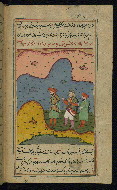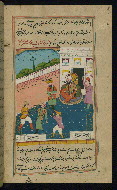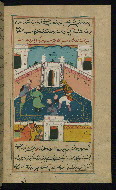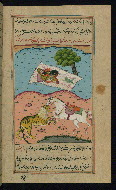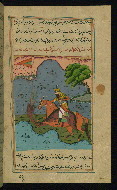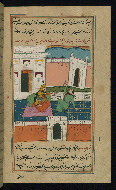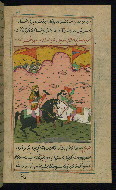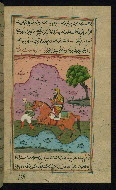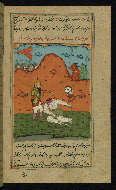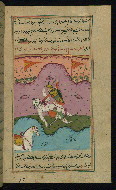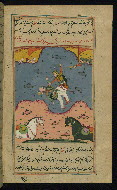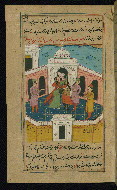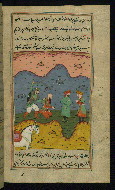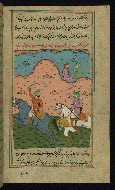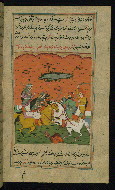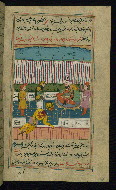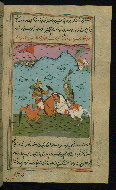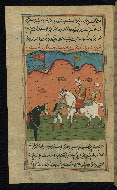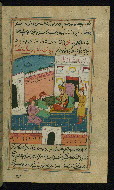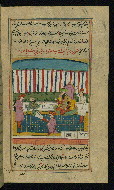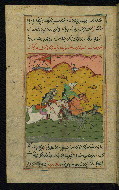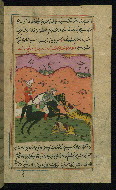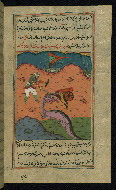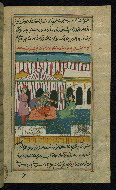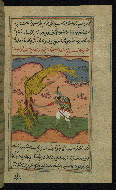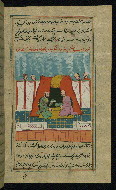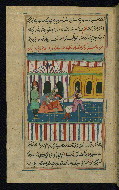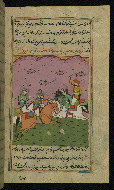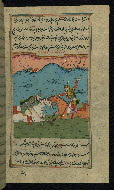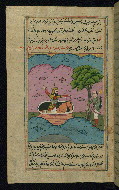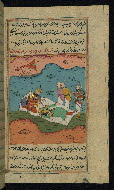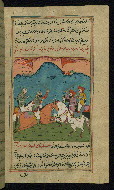Home > Digitized Walters Manuscripts
This document is a tranformation of a TEI P5 XML manuscript description incorporating images. If you have trouble reading special or non-Latin characters on this page, please make sure you have appropriate Unicode fonts installed and an up-to-date web browser.
Walters Ms. W.597, Abridgment of the Book of kings (Shahnama)
Browse images (Browse images in a new window) | TEI in XML format
W.597
Abridgment of the Book of kings (Shahnama)
Vernacular: تاريخ دلكشاى شمشيرخانى
As-written name: Tavakkul Bīk (Beg) valad Tūlak Bīk (Beg) Ḥusaynī
Name, in vernacular: توكل بيک ولد تولك بيک حسينى
Note: Author's name given on fol. 2a, line 2
This is an illuminated and illustrated copy of an abridgment of Firdawsī's Shāhnāmah (Book of kings) entitled Tārīkh-i dilgushā-yi Shamshīrkhānī. It was composed in prose by Tavakkul Beg Ḥusaynī (fl. eleventh century AH / seventeenth CE) for Shamshīr Khān of Ghaznīn (Ghaznī or Ghaznah in present-day Afghanistan). Completed in the thirteenth century AH / nineteenth CE in India, possibly Lahore, the text is written in nastaʿlīq script and illustrated by thirty-three paintings.
13th century AH / 19th CE
Northwest India
Book
Historical
Literary -- Prose
The primary language in this manuscript is Persian.
Paper
Laid paper
Foliation: 176+i
First folio mounted on green cloth
Catchwords: Written obliquely on versos
20.5 cm wide by 33.0 cm high
15.0 cm wide by 28.5 cm high
- Columns: 1
- Ruled lines: 17
- Title: Tārīkh-i dilgushā-yi Shamshīrkhānī
- Author: Tavakkul Bīk (Beg) valad Tūlak Bīk (Beg) Ḥusaynī
- Incipit: حمد بيغايت وثناى بى نهايت...
- Hand note: Written in nastaʿlīq script in black and red ink
- Decoration note: Thirty-three illustrations; incipit page
Upper board outside:
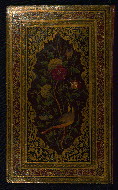
- Title: Binding
- Form: Binding
- Label: This lacquer binding, decorated with floral motifs, a bird, and inscriptions around the outer frame, dates to the thirteenth century AH / nineteenth CE.
fol. 1b:
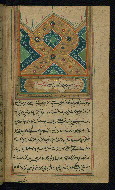
- Title: Incipit page with illuminated headpiece
- Form: Incipit
- Label: This incipit page with illuminated headpiece is inscribed with the doxological formula (basmalah) in the central cartouche.
fol. 6b:
fol. 12b:
fol. 22b:
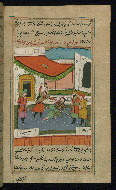
- Title: Tūr kills his brother Īraj
- Form: Illustration
- Label: The subject of this scene, described in red nastaʿlīq script, is the killing of the legendary favorite son Īraj by his brother Tūr.
fol. 30b:
fol. 42b:
fol. 43b:
fol. 44b:
fol. 45b:
fol. 46b:
fol. 47b:
fol. 48b:
fol. 62b:
fol. 67a:
fol. 74b:
fol. 80b:
fol. 89b:
fol. 96b:
fol. 105b:
fol. 112a:
fol. 120b:
fol. 129b:
fol. 134a:
fol. 134b:
fol. 135b:
fol. 136b:
fol. 137b:
fol. 138b:
fol. 140a:
fol. 142b:
fol. 154b:
fol. 157a:
fol. 165b:
fol. 169b:
The binding is original.
Lacquer boards (no flap); floral motifs with a bird in the central panel and inscriptions in the outer frame
Gift note from Ḥasan ibn ʿAlī ibn Ḥusayn Marāghī, known as Ṣanī al-Dawlah, to Nuṣrat Pāshā Mushīr, 18 Shaʿbān 1303 AH / 1885 CE (fol. 2a, left margin)
Walters Art Museum, 1931, by Henry Walters bequest
Richard, Francis. Catalogue des manuscrits persans. (Paris: Bibliothèque nationale, 1989), no. 99A.
Principal cataloger: Gacek, Adam
Catalogers: Landau, Amy; Smith, Sita
Editor: Bockrath, Diane
Conservators: Jewell, Stephanie; Quandt, Abigail
Contributors: Barrera, Christina; Emery, Doug; Herbert, Lynley; Noel, William; Simpson, Shreve; Tabritha, Ariel; Toth, Michael B.; Valle, Chiara
The Walters Art Museum
Licensed for use under Creative Commons Attribution-NonCommercial-ShareAlike 3.0 Unported Access Rights, http://creativecommons.org/licenses/by-nc-sa/3.0/legalcode. It is requested that copies of any published articles based on the information in this data set be sent to the curator of manuscripts, The Walters Art Museum, 600 North Charles Street, Baltimore MD 21201.
